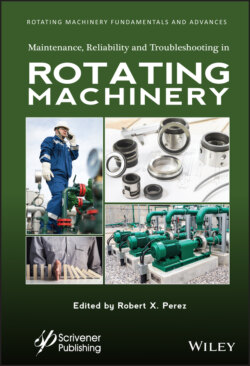Читать книгу Maintenance, Reliability and Troubleshooting in Rotating Machinery - Группа авторов - Страница 40
Availability
ОглавлениеAvailability, also known as uptime, calculates what percentage of the time a piece of equipment was actually performed (or was able to perform if called upon by the site). It is an essential metric for measuring the overall effectiveness of an asset. If a machine’s availability falls below a tolerable level, then the site must investigate the reason(s) why and develop a plan to improve it.
Normally, a tangible asset tends to lose its availability performance as it is used over time. Technicians can improve the asset’s availability by undertaking essential maintenance tasks. However, when availability drops below a specific threshold, the asset’s performance will not improve unless it is upgraded or replaced. There are several ways to calculate availability. The first is as follows:
An alternative means of determining availability is as follows:
Here is a simple example using the uptime/downtime method: A critical machine ran for 700 hours in a given month. During that month, the asset also had 12 hours of unplanned downtime because of a breakdown, and 8 hours of downtime for weekly PMs, which equals 20 hours of total downtime. Therefore 700 uptime hours + 20 downtime hours = 720 total hours. Using these numbers, we can determine the availability for the month is equal to 700/(700+20) = 97.22%.
Tracking availability can help identify opportunities for improvements by identifying problematic equipment. The typical availability benchmark is above 95% for most assets. However, it can differ depending on how necessary the equipment is to your operations.
Figure 2.7 Hypothetical machine history. Green (solid) arrows indicate machine is running and red (dashed) arrows indicate machine is down for maintenance.
